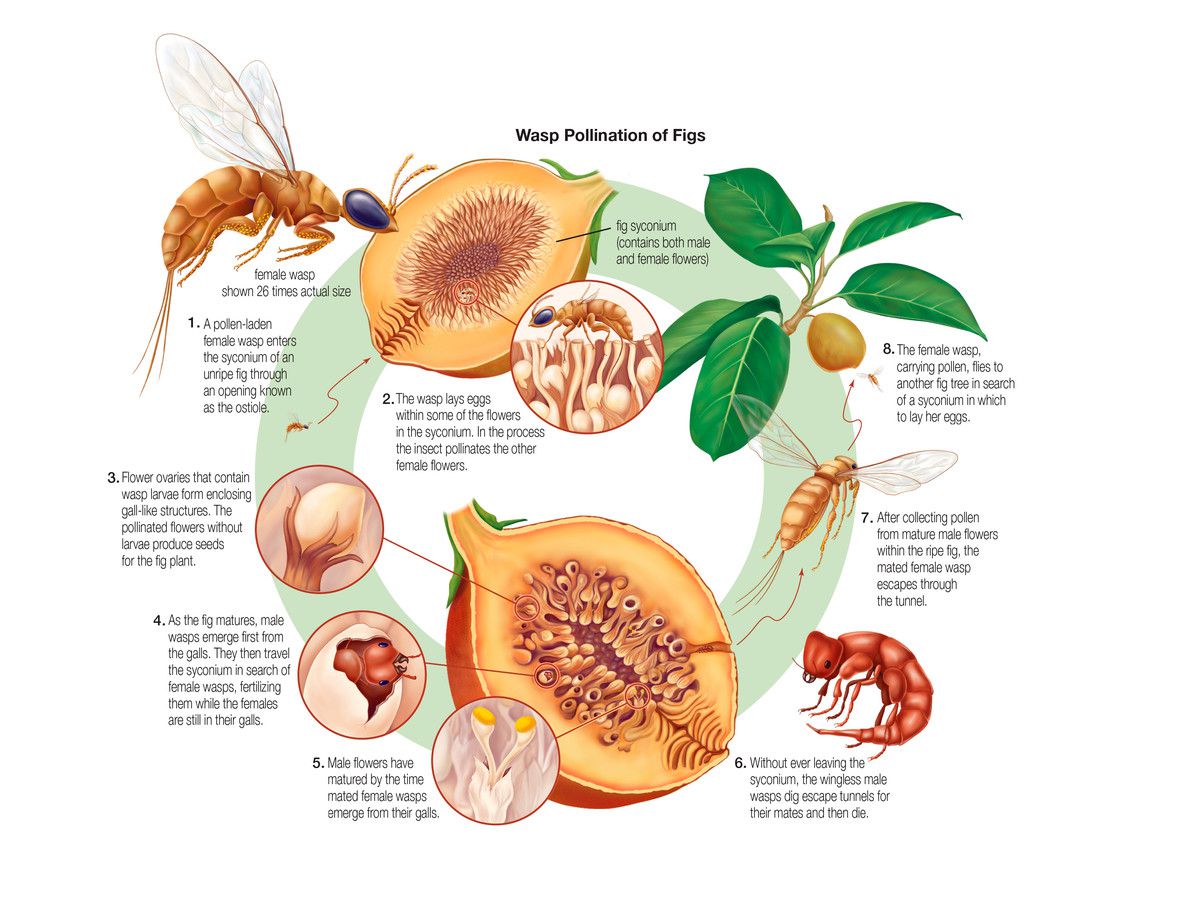Fig trees, plants in the family Moraceae and genus Ficus, are well known for their delicious fruits, which we bake into all manner of dishes. There’s one biological aspect of the plants» lives, though, that surprised us when we learned about it. During their lifespans, figs undergo what Martine Hossaert-McKey and Judith L. Bronstein describe in The American Journal of Botany (2001) as «highly specialized pollination mutualism with agaonid wasps.» While many figs we now plant are self-pollinating, some figs still rely on wasps for pollination.
Native Fig Species That Rely on Wasps
What we know as fig fruits are actually inverted flowers. According to the U.S. Forest Service, «The crunchy little things that you notice when eating a fig are the seeds, each corresponding to one flower. Such a unique flower requires a unique pollinator.» These insects (also known as fig wasps) play an integral role in the life of the fig. The U.S. Forest Service continues, «Fig trees are tropical plants with numerous species around the world. There are just two species native to the United States: the Florida strangler fig (Ficus aurea) and the shortleaf fig also called giant bearded fig or wild banyan tree (Ficus citrifolia). Each requires the services of one species of wasps.» Lured in by the fragrance of the plant, female wasps make their way inside the fig via a small opening, laying eggs and spreading pollen as they go.

How Fig-Wasp Pollination Works
The wasp usually struggles to get in, often losing its wings as it goes. Once the wasp breaches the fruit, the U.S. Forest Service describes, «It runs around the interior of the fruit visiting many flowers, laying its eggs inside the future seeds that will nourish its progeny and also spreading the pollen collected from the previous fig where it was born. This pollen will allow all seeds to grow, not just the ones where it has deposited eggs.» The eggs grow, the wasps emerge, and more fig fruits form from the pollinated eggs—biological mutualism in action!
Most Figs We Eat and Grow Are Self-Pollinators
If the thought of wasps in your figs makes you shiver, there’s no need to worry. According to The New Southern Living Garden Book, «The type of figs generally grown in the South do not require pollination.» Self-pollinating figs of the species Ficus carica (The Garden Book describes it as «a traditional favorite fruit tree of the Deep South») are the ones you’re likely to find in garden stores; these wasp-less species are the ones that provide the delicious varieties of figs we cook with.
If you’re interested in learning more about figs, check out our articles on fig varieties and how to grow a fig tree. Also, if you’d like some inspiration for using figs in the kitchen, read 10 Fresh Fig Recipes.
Are figs one of your favorite ingredients to use in the kitchen? Do you have any fig trees growing in your garden?